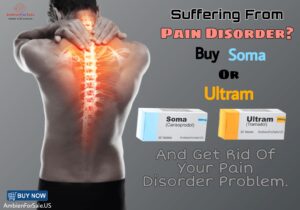You need to know more about pain issues if you want to treat them
What is a pain disorder?
Pain is the primary symptom of a pain disorder, which is a physical ailment. Depending on the region, other symptoms may include swelling, tightness, pain, and more. Most people suffer from myofascial pain, which occurs when trigger points are found in the skeletal muscles. Arthritis, disc diseases, and arthralgia are the following most common causes of joint discomfort. It is common and manageable to have neuropathic and neuralgic pain. Being seen by a doctor right away often helps to avoid or decrease health issues.
Defining what a pain disorder is might be difficult. If you’ve had chronic pain for more than six months and it’s disrupting your daily life, it’s not always a chronic pain disorder. Chronic pain in one or more parts of the body is a symptom of a painful illness. In many cases, the pain is so intense that it prevents the sufferer from carrying out their daily routines. It could last for a few hours, or it could go on for years.
What are the different sorts of pain?
There are two ways to look at this. The pain can fall into more than one of these five categories, and that’s where the problem arises.
• Acute pain
• Chronic pain
• Neuropathic pain
Acute pain pain disorder
When we talk about acute pain, we imply that it lasts anywhere from a few minutes to three months at the most (sometimes up to six months). Several factors might cause acute pain, but one of the most common causes is an injury to soft tissue or a short illness. If a wound doesn’t heal correctly or if the pain signals misfire, acute pain can turn into chronic pain.
Chronic pain pain disorder
Chronic pain lasts a long time. Intermittent or regular: it might be either. Headaches are an example of an ailment that can be deemed chronic even though the discomfort isn’t always there. Arthritis, fibromyalgia, and spinal conditions, including degenerative disc disease, are all common causes of chronic pain.
Neuropathic pain pain disorder
Pain caused by injury to the neurological system might be called neuropathic. Shot, stabbing, or searing pain is commonly described in terms of the feeling of pins and needles. It can also reduce a person’s sensitivity to touch and impair their ability to detect heat or cold. Chronic neuropathic pain is a frequent ailment. Symptoms might range from intermittent (meaning they come and go) to severe (meaning they interfere with day-to-day activities). Mobility difficulties can arise as a result of the discomfort interfering with regular movement.
Cause
There are several hypotheses as to why people develop a pain problem.
• Theories of psychoanalysis hold that the body’s physical symptoms can be used to mask an individual’s inner conflicts or desires.
• Distressing symptoms may be the only way youngsters may express themselves when they cannot communicate or convey their thoughts verbally.
• Distress can manifest physically when mental illness is stigmatized by society, whether in families or communities.
• It is hypothesized that children learn to emulate family members or pick up on the benefits of being “ill.”
• As part of a family’s dynamics, a child’s position may be that of the ill one. Entanglement, over-protection, rigidity, or a lack of conflict resolution are a few possible explanations.
• Many different types of trauma and abuse can be classified as either physical, psychological, or both. Quite often, this is the case. This disease is more common in abuse victims, whether it be physical or sexual in nature. People with a pain issue may or may not have been abused in the past. The best chance of preventing a pain issue is to get help as soon as the pain starts or starts to become chronic.
Symptoms
Many pain descriptions, including phantom limb, dyspareunia, orofacial pain, fibromyalgia, pelvic pain, and many others, have been linked to psychological dysfunction. This includes stomach pain, chest pain, and headache. No anatomical distribution of pain, discomfort in non-injured regions, pain that appears out of proportion to injury severity, and pain without damage have all been labeled as symptoms by medical professionals. Psychological abnormalities that underlie each of the pain symptoms must be taken into account by the assessors.
Treatment
It’s critical to get medical attention if you want to alleviate your symptoms and resume normal daily activities. Some of the treatment options available are cognitive-behavioral therapy (CBT) or family therapy, proper antidepressant medication, and proper pain management. Using cognitive-behavioral therapy (CBT) can help alleviate the stress of dealing with chronic pain while also changing one’s outlook on one’s own health, which can help alleviate the related health anxiety and melancholy. In some instances, antidepressants can ease the pain while also reducing symptoms of depression and anxiety.

